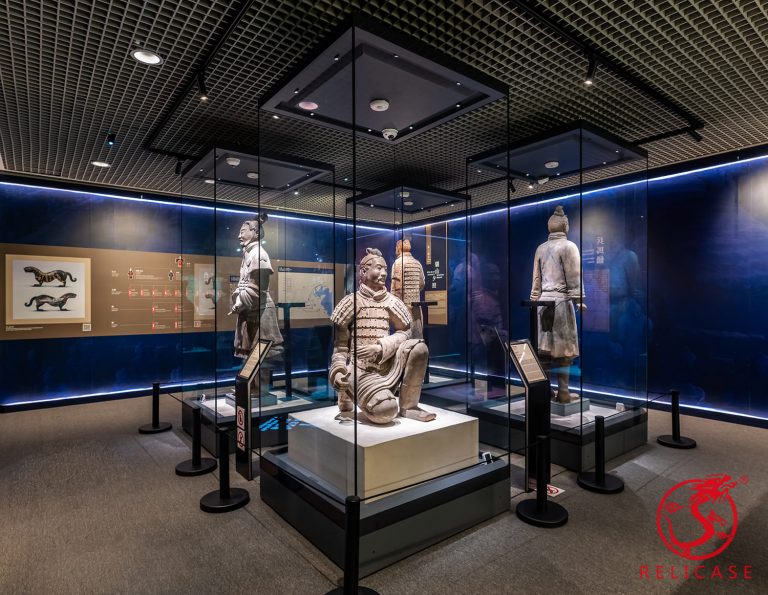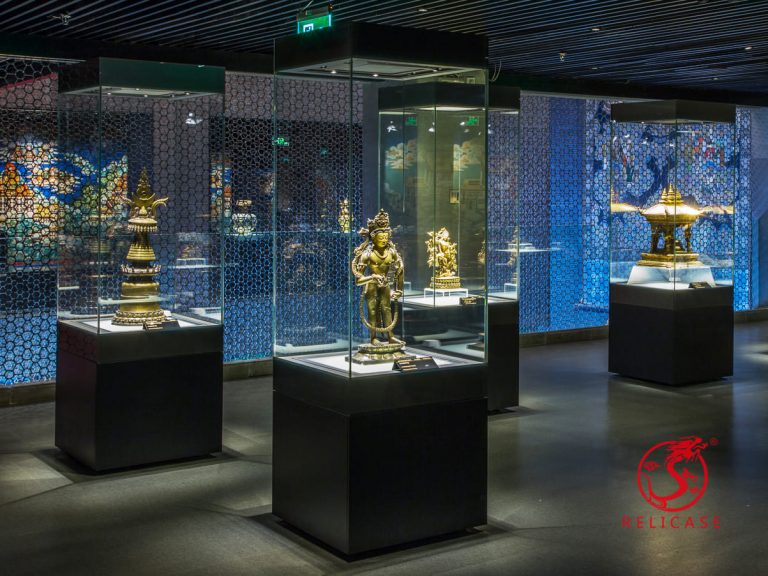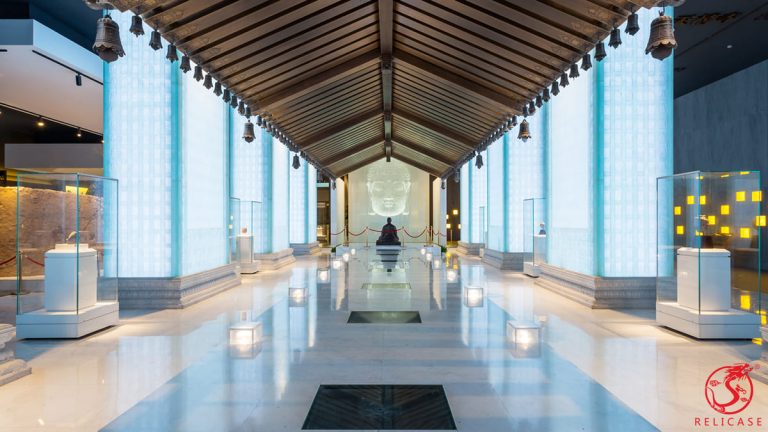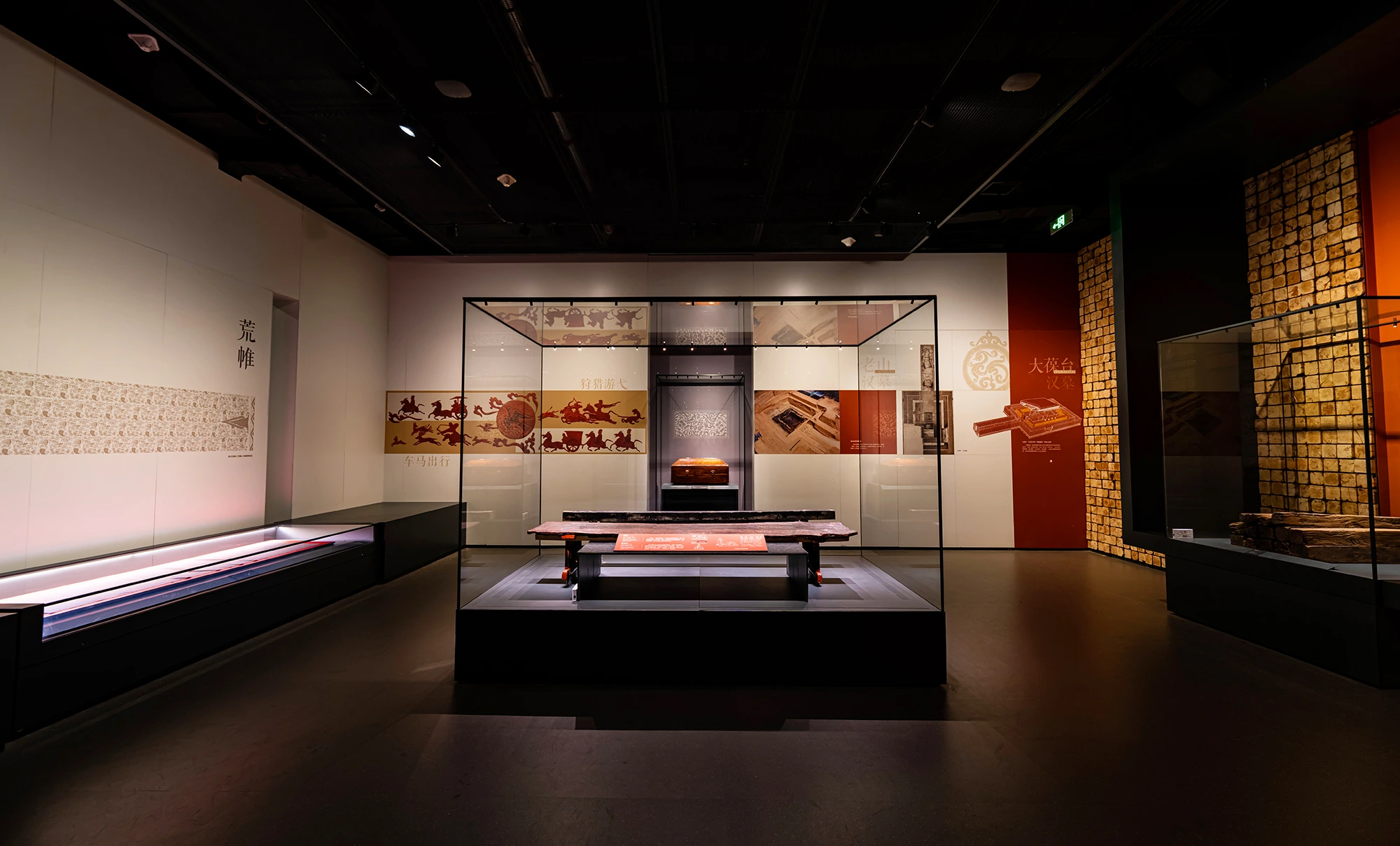To make cultural museum display cases general principles of design
To make cultural museum display cases that meet the needs of the exhibition, here are the general principles of design:
Coordination: The appearance, materials, and lighting configuration of the showcase should align with the style of the exhibits. Starting from the characteristics of the exhibits, integrate the showcase into the exhibition environment, making it as invisible as possible while highlighting the exhibits.
Durability: Ensure that the structure of the display case remains stable in the indoor environment over a long period of time.
Safety: Use a steel frame structure to ensure the overall structural reliability, and choose materials that meet anti-theft standards.
Operability: Design the display cases to facilitate easy operation while protecting the cultural relics. A single person should be able to operate the display cases independently.
Environmental protection: Utilize environmentally friendly materials to prevent chemical reactions that may damage the exhibits. The backboard, flat board, and textile lining of the display case should be made of environmentally friendly materials, and the surface layer should undergo flame retardant treatment.
Lighting control performance: Meet the requirements of the “Museum Lighting Design Code” to create an appropriate atmosphere, highlight the exhibits, and consider the lighting of auxiliary items. Conceal light spots, control the illumination and angles, and filter out red external light, ultraviolet light, and heat to prevent damage to the exhibits.
Environmental control performance: The display cases should have good sealing to achieve controlled temperature and humidity levels as required. It should provide an anaerobic environment, air filtration, and environmental data monitoring based on an Ethernet system.
The showcase serves as both the stage and the direct protector of cultural relics. Its primary function is aesthetic, followed by practicality.
The fundamental characteristic is to address both the requirements of “exhibition” and “protection.” Precious cultural relics should be equipped with corresponding display cases, as good horses require good saddles. A good showcase should be designed and constructed with beautiful coordination, ease of operation, safety and reasonableness, environmentally friendly and durable materials, as well as controlled lighting, temperature, and humidity.

Relicase at Macau Museum: Safeguarding Heritage, Celebrating Legacy
Macau Museum: “Edification of the Masses — Cultural Treasures from the Zhou, Qin, Han, and Tang Dynasties” A Landmark Embraces Innovation The Macau Museum stands proudly atop the historic Mount Fortress, next to the famous Ruins of St. Paul’s. As an iconic symbol of Macau’s history and multicultural heritage, it now embraces the touch of…

Potala Palace
Abstract On April 26, 2017, Relicase completed the showcase project for the Treasure Hall of the Potala Palace in Tibet. The Collections Hall spans three floors and is divided into two major sections, showcasing a total of 273 individual artifacts and replicas, as well as 155 sets of artifacts (or 159 sets, including 147 sets…

Porcelain Tower of Nanjing
Abstract The Porcelain Tower of Nanjing, named and constructed by Emperor Yongle of the Ming Dynasty to honor his parents’ boundless love and virtue, stands as a symbol of filial piety. Celebrated in Du Mu’s poetic lines, “Four hundred and eighty temples of the Southern Dynasties, how many pavilions linger in the mist and rain,”…

The basic guide to Museum Showcase Glass
As museums continue to modernize, the glass used in display cases has undergone a remarkable transformation to meet ever-evolving requirements for safety, visibility, and artifact preservation. The shift from basic transparent materials to specialized, high-performance glass highlights the strides made in exhibition technology. The Journey of Museum Showcase Glass Historically, glass in museum showcases was…

How to Design Lighting for Museum Display Cases
Museum display cases are freestanding, touchable structures. To comply with engineering safety standards, the lighting inside these cases should operate on low-voltage input. Relicase, in line with national standards, ensures the display cases they manufacture meet the following specifications: 1. Protective or isolating measures must be in place between the lighting fixtures and the display…

Display Case Project Research: French Pavilion Shanghai Expo 2010
Project Introduction Architect: Jacques Ferrier Architectures Scenography Engineering: Scenos-associes Vitrines Design: Scenos-associes Vitrines Fabricate & Installation: Relicase Originally constructed as a train station for the 1900 World Fair, the Musée d’Orsay is situated in Paris on the left bank of the Seine River. It has served as a hotel, auction house, and post office for…
